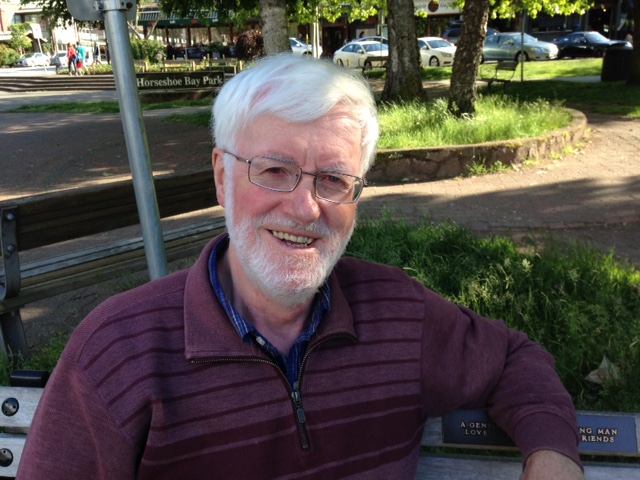
(by Margot Grant) After announcing the Woodfibre LNG plant near Squamish was a go last November, the B.C. government granted the company a 40-year LNG export licence earlier this month. Yet Eoin Finn, who vigorously campaigned against the project, is certain the plant will not be built. “The fight is almost over.”
Finn has a Ph.D. in physical chemistry and an MBA in international business. He was a management consultant, and ultimately partner, with the accounting consulting firm KPMG. For 25 years, he examined business cases.
After Finn retired in 2010, his three children, two of them marine biologists and the third well-versed in matters technical, “ganged up” on him and his wife one evening. “We’re quite concerned about what your generation is leaving us,” they said. “Dead oceans, a ruined atmosphere, and a mountain of debt are not what we had in mind as our inheritance. Now that you have time on your hands, please apply your education and know-how to try and make sure we will inherit a planet that is in better shape than what you inherited from your parents,” they told him.
“I was taken aback, but that’s how it started,” Finn says. “I looked around, and the first thing that hit me was premier Christy Clark announcing the Woodfibre LNG plant in 2014. It got me interested because of the economic argument, and because it seemed to fly in the face of the growing awareness that we have a big climate problem.”
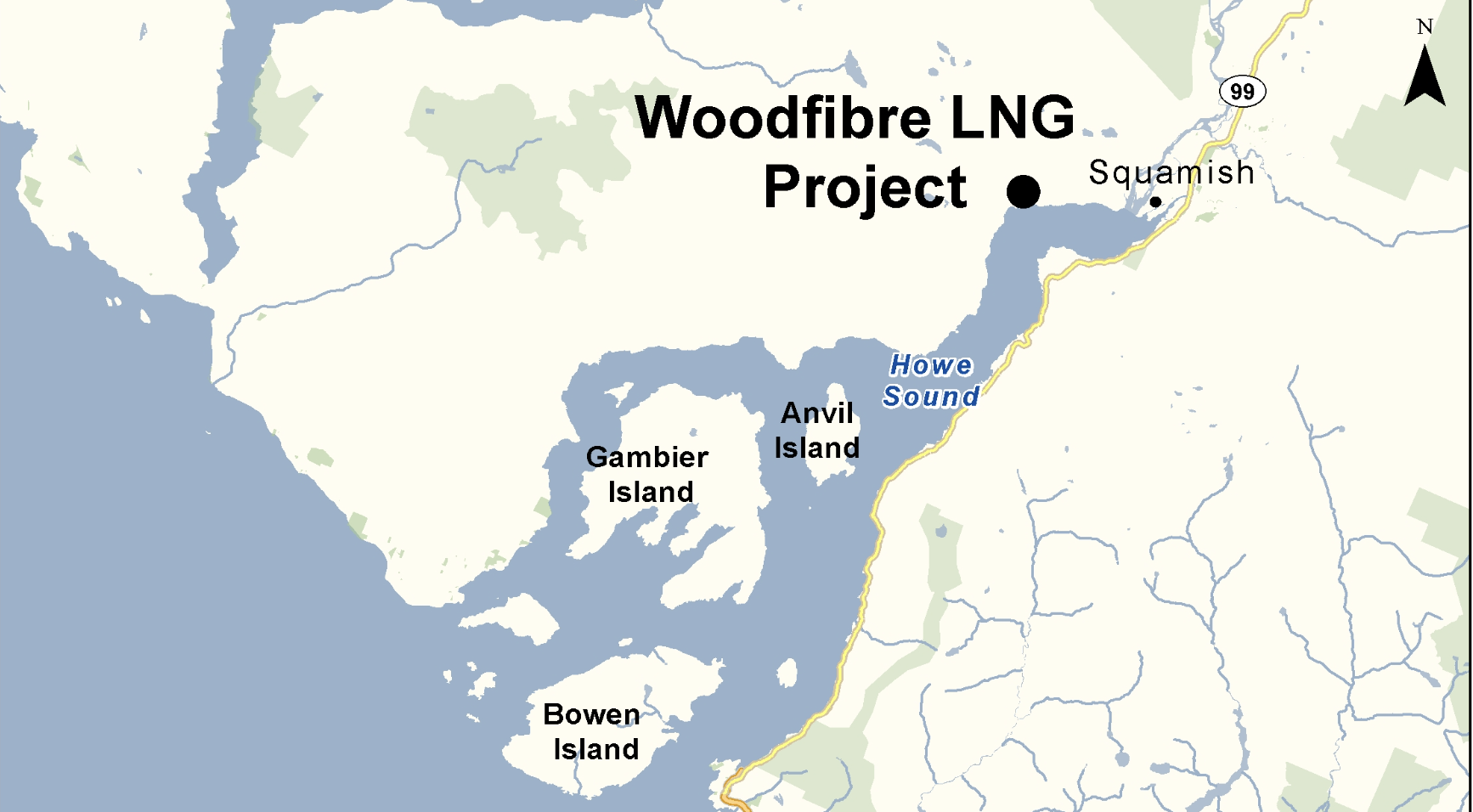
The fact that tanker bombs, as he calls them, were going to float by his property on Bowyer Island accelerated his interest. “The international rules that govern LNG facilities say ‘do not put them them in narrow waterways with significant commercial and recreational traffic.’ And for good reason: it’s dangerous.” Woodfibre has never built or operated an LNG facility before, adding to the risk.
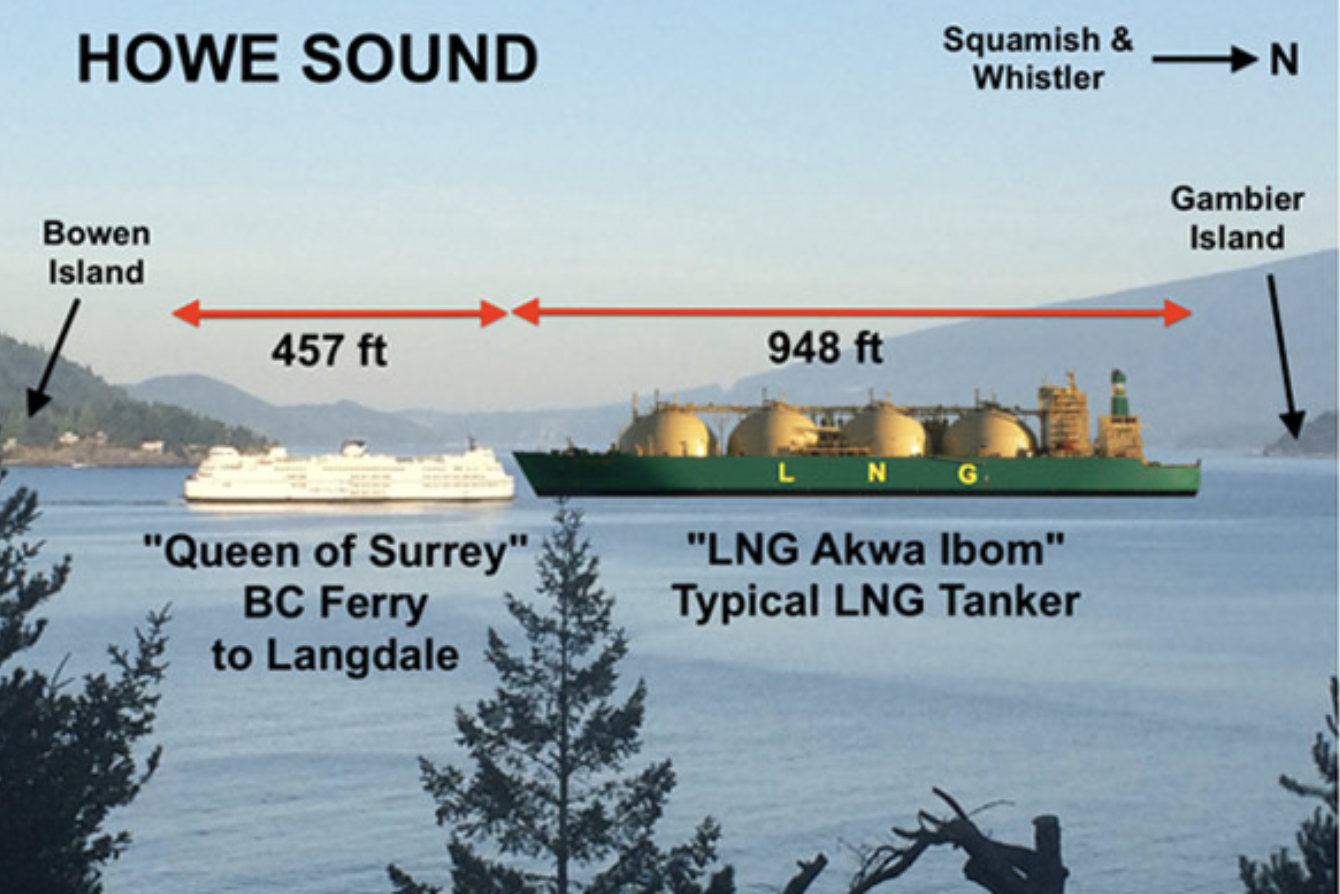
“I met up with some people from Squamish and, over coffee, we said we have to do something about this,” he recalled. “And I said, ‘Well, I can dig out everything you need to know.’ So I did, and it went from there. Four people in a coffee shop. That’s all it took. My Sea to Sky, (a group fighting industrialization of Howe Sound) started the battle.”

Three years later, Finn is certain the Woodfibre LNG plant will not be built. “If you believe that it will, I have a bridge to sell you,” he says.
But did premier Clark, Woodfibre vice-president Byng Giraud and minister of natural gas development Rich Coleman not pose for a photo op at the site on November 4 last year, proudly announcing that the project was a go?
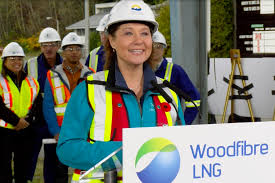
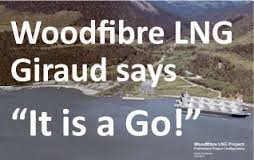
Coincidentally, this was the same day the B.C. Liberal convention opened in Vancouver.
The announcement meant nothing, Finn says. For the project to succeed, Fortis BC needs to build a 24” pipeline to bring the gas from Coquitlam across the Squamish River to the plant. A compressor station is planned at Mount Mulligan, just south of Squamish.
“Of course Fortis will not construct anything unless Woodfibre commits to building the plant. They need to sign a contract. And we know they have not done that because Woodfibre would announce it, as would Fortis.”
Fortis is a publicly-owned company that is required to report to its shareholders and to the financial analysts who follow their actions. In the latest briefing to these analysts, Fortis indicated that Woodfibre might make a decision about whether to build or not before the end of 2017.
“So that’s how we know the November 4 announcement that Woodfibre LNG is a go meant nothing.”

The rezoning for the Fortis compressor station near Squamish is not in place. “I think Fortis would go for that first before thinking of signing a deal with Woodfibre to build the compressor station,” he continued.
The rezoning application has to go before the Squamish-Lillooet Regional District (SLRD). “We are girding our loins for the battle with the rezoning committee of the SLRD,” Finn says. “But it will probably be our last battle in the fight against Woodfibre LNG.”

On February 23 this year, investigative journalist Bob Mackin reported in thebreaker.news that an October 6, 2016 briefing note for minister Coleman stated that Woodfibre planned to submit a LNG facility permit application to the BC Oil and Gas Commission in early 2017. The company has not done so.
Finn cites a number of other reasons he believes the Woodfibre LNG plant will not be built.
“The current rate in Asia for spot LNG is about $5.45 per million BTUs (British Terminal Units). Four years ago it was $18. It costs between $10 and $12 to produce a million BTUs. The owners of these LNG facilities are no fools; they won’t start anything under the current conditions.”
“There is a glut of LNG on the world market. Shale deposits are found everywhere in the world. China has the biggest, Russia is second, and East and West Africa, Australia and the US have seen a rash of proposals for LNG plants.
“True, BC has a geographical advantage; it is closer to North Asia than Louisiana and Texas where most of the U.S. facilities are located. When LNG tankers lease for $50,000 a day and cost $14,000 in insurance per day, distance is an important factor. But unfortunately Australia, where six LNG plants are starting to produce LNG in great bulk, is significantly closer to South Asia and most of North Asia than we are. And Australia is just as forgiving to LNG companies when it comes to taxes as B.C.”
Chevron, Shell, and Exxon control the worldwide LNG market. “The idea that a pipsqueak like Woodfibre is going to muscle in on that is very unlikely. It has never built or operated an LNG facility.”
Woodfibre needs $2 billion to build the facility on Howe Sound. “Typically, the arrangement for financing is that 80 per cent of your production has to be spoken for. The banks want to be sure that there will be enough revenue to pay the interest on $2 billion. Unless you have guaranteed customers who have signed for your production, no banker in his right mind is going to loan you anything. Especially not in a place with a lot of opposition, as in Howe Sound,” Finn continues.
“Currently, Woodfibre has no customers. The chances that the banks are going to lend them $2 billion are slim to none,” Finn says.

He cites three more reasons he believes the Woodfibre LNG plant is definitely not a go:
“First, Russia is building two pipelines. The biggest one, with a 5’ diameter, goes to China. There is no liquefaction involved, no requirement to freeze the gas and put it in a ship. All you have to do is pump it from Russia to China.
“Second, what sparked the whole interest in LNG was the Fukushima incident in 2011, which caused Japan to shut down 54 nuclear reactors. When the lights in Tokyo went out, the Japanese switched to LNG. But as of today, five of those reactors have been turned back on, and an estimated 35 more will go back in production in the next two years. The imported LNG cost Japan a lot of money and caused huge balance of payment problems. So premier Shinzō Abe has decided that Japan is going back to nuclear, albeit with much more stringent security standards.
Since Japan represents 70 per cent of Asia’s demand for LNG, and almost 50 per cent of the world’s, that’s a huge factor.”
The third reason is the decarbonization of our economy. China and India have decided they are going to lead the fray because they have huge problems with air pollution. They see an enormous opportunity to lead the world in clean tech.
“It has become cheaper to generate solar, wind and geothermal than to use fossil fuels. Our leaders in Canada don’t realize there is a much bigger opportunity in clean tech than in fossil fuel infrastructure. It would naturally fall to us, with our fairly high standard of education and high technical capability, but we will cede clean tech to the Chinese and Indians and wind up looking at our nineteenth-century fossil fuel industry, realizing that we missed the boat again,” Finn asserts.
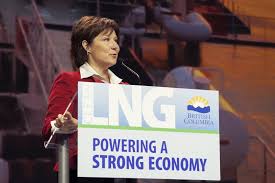
The provincial environmental permit for Woodfibre will expire in late 2020. Under an NDP-Green government, it is unlikely it will be renewed.
Woodfibre is buying time. Earlier this month, it obtained a 40-year export licence, replacing the 25-year licence it received two years ago. The new licence allows the company up to ten years before actually starting production. The earlier licence had an expiry of December 31, 2021, only four years away.
“Woodfibre Ltd. can now hang around at the site for ten years and get paid to do it,” Finn says. “BC Hydro pays Woodfibre $1.7 million a year for electricity generated at the site. It’s a small independent power producer (IPP); water from a lake up top powers a small turbine. When it bought the property, Woodfibre took over the contract from Western Forest Products.
“I think it is a take or pay: whether Woodfibre gives electricity to BC Hydro or not, BC Hydro is on the hook for $1.7 million a year,” Finn says. “It allows Woodfibre to pay their staff out of what is essentially an ongoing gift from BC Hydro.
“BC Hydro pays Woodfibre $158 per megawatt hour, about twice the rate to break even. But last November, it was announced that Woodfibre will be able to buy electricity from BC Hydro for $54 per megawatt hour.”
Finn has estimated that if Woodfibre LNG would have been operating, this new rate would have resulted in a $34 million-a-year subsidy to the plant, worth $860 million over 25 years.
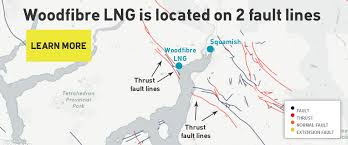
“We are so lucky the market for LNG has collapsed,” Finn says. “For one, the citizens of Squamish, Whistler and Pemberton are off the hook. With their gas bills, they would have made financial contributions to a pipeline that would be built for the exclusive use of Woodfibre. The B.C. Utilities Commission has decided that this is none of its business—yet again.”
Canada had very little to gain from the B.C. fracking and LNG industry, Finn believes.
“These industries have acquired $2 billion in tax credits so far. If the plants were to operate, the first $2 billion in profits would be tax-free. The rest would be taxed at only 3.5 per cent royalty tax per million BTUs, amongst the lowest in the world.
“But it gets worse: Woodfibre and many other proponents actually have two companies, a local and a foreign one. Woodfibre’s headquarters are in Singapore, and then there is Woodfibre Ltd. here in B.C. The gas will always be owned by the Singapore company; the local company merely gets a stipend to liquefy and store the gas until the Singapore company sells it.
“This is called transfer pricing which, although legal, is causing huge problems for Revenue Canada in trying to make sure that profits are not stolen away to off-shore locations.
“Under this arrangement, the chances that any money would come to the B.C. government to pay for nurses, doctors, hospitals, schools or teachers are remote. The only thing we would basically have gotten out of this deal was temporary employment for one hundred people at the Woodfibre site.”

Now that the fight is basically over, Finn sees a great opportunity for the site. He has visited a very successful high-end resort in New Zealand at a comparable, beautiful location: on the water, and only accessible by boat.
“This would be ideal at that spot on Howe Sound. It’s so close to Vancouver, halfway to Whistler, and near Squamish for supplies and employees. In conjunction with the beautiful environment of Howe Sound, which could and should be a national park or a UNESCO Biosphere Reserve. I see a great opportunity here.”
Woodfibre Ltd. did not return phone calls.
Eoin Finn has focused his attention on Site C.
“BC Hydro pays Woodfibre $158 per megawatt hour, about twice the rate to break even.”
Yes, that’s a tidy little business Woodfibre LNG has going, on the side. In fact, it may have been THE reason they bought the property in the first place: knowing there was an intact IPP contract with BC Hydro. This is a fairly unique IPP, as it has a dam and is not run-of-river, so can produce power throughout the year.
If the LNG plan fails, they still have great value in the IPP and could shift their plan for the property to (perhaps) a resort or other non-industrial purpose.
Why BC Hydro would pay THAT much for unneeded power is something for the new government to look into. No ratepayer pays that much, retail, to buy the power, so Hydro is losing at least 30% on every unit it buys. Such a loss is not unique to the Woodfibre IPP.
Thank you with all my heart to Eoin Finn for your expertise and hard work!!!
Thousands of supporters (residents & visitors) have signed the proclamation to protect Howe Sound. The District of West Vancouver, Village of Lions Bay, Municipality of Bowen Island, Town of Gibsons, District of Squamish & Regional Districts of Powell River & The Sunshine Coast plus the BC Islands Trust & Representatives of Gambier Island have all voted/sent letters to all levels of government in opposition to the Woodfibre project.
Dr. Finn has been at the forefront of this movement to protect Howe Sound from industrialization, specifically the Woodfibre Ltd. LNG plant. He has spoken about it and LNG production at the request of groups around the province concerned about the potential location of similar projects within their communities.
As a longtime resident of Horseshoe Bay in West Vancouver I want to thank him and everyone else concerned for their dedication to preserve Howe Sound for future generations and the millions of tourists that visit this region.
Great work Eoin!!!
One of the best explanations of why BC’s LNG claims were fantasies. Very expensive, politically motivated fantasies that were aimed at winning the 2013 election.
This isn’t the 1st time I have read about Woodfibre and the shenanigans of our elected elite. But what really bothers me is; how come this and other articles on this subject isn’t common knowledge? I just hope that Horgan/Weaver do a forensic audit and find out who orchestrated this and other boondoggles. Heads should roll.